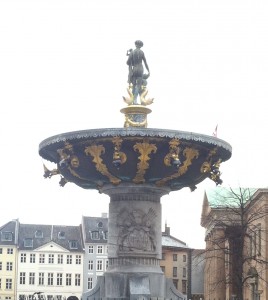Last week brought me the good fortune of seeing a couple cities in Eastern Europe as well as a few nights in the hidden gem of Malta. It really was quite a privilege and it’s wild to realize that I will likely never forget this trip. But despite the gray skies and bizarro language, it was lovely to sit on the comfy seats of the S train and know I was back in Denmark.
The City of Viking Love, of bikes and liver paste. And there is much to celebrate here. Aside from a new 7/11 in the Norreport train station, Tivoli (amusement park) is now open, fountains are turning on all over the city, and the queen turns 75 next week. There are rumors of free pastries at the celebration.
The part of Denmark that currently has me captivated is the incarceration system. That word, though, incarceration, might even be taking it a step too far. The majority of Danish prisons are called “open” prisons, and the policies and facilities are just about as relaxed as the name suggests. When this was introduced to me, it came all too fast and caused a bit of a shock. I had never thought of myself as a defender of the American prison system (while admittedly not knowing much about it), and so was surprised to feel such strong negative feelings when the Danish open prison system was first described. So I’ll start with some simple differences.
1) Prisoners (in both open and closed prisons) can wear their own clothes.
This seems like a nice gesture, maybe indicative of something larger…
2) Prisoners have their own rooms with TVs, and share a kitchen where they can cook the food they brought from the on-site grocery store.
Wait a minute…where do they get money to buy their own food…?
3) Prisoners can hold jobs that pay near minimum wage (higher than US minimum wage) and even go to University. These occupations can take place on, or off, of the prison grounds. Sick pay is issued when a prisoner falls ill.
This is when the whole picture starts to become visible.
4) Prisoners are allowed to go home every other weekend, sometimes more frequently
What?
5) Guards are not armed.
Ok…
6) Some open prisons have a local bus stop running right through the prison grounds that carries normal citizens and can be used by prisoners to go into town when they are allowed.
Prisoners are actually allowed off the grounds all the time, for jobs, family, and purely for recreation. They interact with everyday citizens and participate in normal events. This all leads to the core difference between Danish and US prisons. Danish prisons seem to avoid anything resembling punishment. They strive for comfortable conditions, to empower the inmates, and give them opportunities for their post-prison lives. The US system is centered around punishment, the 3 S’s always seem to be the goal. Make punishment Swift, Severe, and Certain (a “c” snuck in there). They don’t even seem comparable. But these open prisons deal with rapists and murderers, the same as in American maximum security prisons. Closed prisons in Denmark are generally reserved for those who have abused their time at an open prison.
Open prisons are not quite a 24 hour Tivoli (see above)- they do have some rules. No internet access on the grounds is a big one. Also no alcohol on or off the grounds, and certainly no drugs. Gang members are also sent to closed prisons. And a Danish brochure for prisoners reminds them that, “It is a criminal offence to escape from the prison”. Rough. They’ll be glad to know that Danish prison terms are significantly shorter than US prison terms.
I’ll be keeping an eye out for axe murderers on the mean streets of Copenhagen but so far so good.

